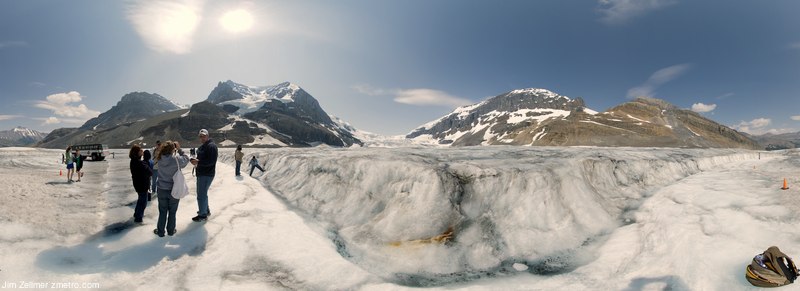Raise less corn and more hell,” Mary Elizabeth Lease harangued Kansas farmers during America’s Populist era, but no such voice cries out today. America’s 21st-century financial victims make no protest against the Federal Reserve’s policy of showering dollars on the people who would seem to need them least.
Long ago and far away, a brilliant man of letters floated an idea. To stop a financial panic cold, he proposed, a central bank should lend freely, though at a high rate of interest. Nonsense, countered a certain hard-headed commercial banker. Such a policy would only instigate more crises by egging on lenders and borrowers to take more risks. The commercial banker wrote clumsily, the man of letters fluently. It was no contest.
The doctrine of activist central banking owes much to its progenitor, the Victorian genius Walter Bagehot. But Bagehot might not recognize his own idea in practice today. Late in the spring of 2007, American banks paid an average of 4.35% on three-month certificates of deposit. Then came the mortgage mess, and the Fed’s crash program of interest-rate therapy. Today, a three-month CD yields just 2.65%, or little more than half the measured rate of inflation. It wasn’t the nation’s small savers who brought down Bear Stearns, or tried to fob off subprime mortgages as “triple-A.” Yet it’s the savers who took a pay cut — and the savers who, today, in the heat of a presidential election year, are holding their tongues.
Athabasca Glacier VR Scene: Jasper National Park Canadian Rockies

The journey to the glacier is an adventure, particularly the “Ice Explorer” ride.
Links:
Sunrise VR Scene with the BBC at Old Faithful
While capturing this sunrise scene at Old Faithful recently, I learned that the BBC is shooting a 3 part series on Yellowstone. Their videographers, equipped with some very nice equipment, spent the past two mornings waiting for the “perfect” sunrise behind Old Faithful. This scene, on their third day, was best, according to their National Park Service Ranger minder. The program will evidently air in the UK this fall and here sometime in 2009.
Location: 44.460174 -110.829563
The kind ranger also mentioned that she is often asked “where they put the animals at night?”
Full screen vr scene.
Biofuels Deathwatch Map
Biofuel plants have been put on hold faster than your phone company’s tech support line. With corn and soy prices hitting record high prices and an ethanol glut flooding the market, ethanol’s profit margin per gallon has dropped to a meager 25 cents from $2. That’s causing numerous ethanol and biodiesel plants to get put on hold or downright canceled. Hundreds of millions of gallons of production capacity and hundreds of millions of dollars in biofuel investments are now hanging in limbo, as investors hope prices will level out.
That’s not to say that ethanol is dead in the water. There’s a variety of positive reports coming out on the future of the industry — there’s reports that see a meaningful future for ethanol , as well reports saying ethanol could be deliver a better-than-expected energy return. Add in a healthy merger and acquisition market and biofuels will play a role in the future of weaning the U.S. off oil.
21 Great Technologies That Failed
Jeremy A. Kaplan and Sascha Segan:
The most innovative tech doesn’t always succeed. Here we present 10 great technologies each from Apple and Microsoft that were simply too far ahead of their time.
Mention technology that failed and people instantly think of Microsoft Bob, the IBM PCjr, and worse. But those weren’t necessarily great products—heck, Bob wasn’t a good idea at all. The ideas and innovations that succeed aren’t necessarily the best either; they just happened to be in the right place at the right time.
Flight’s 100 Greatest
It is always a slightly nerve-racking moment for an editor to commission a reader’s poll. Quite simply, what happens if so few people participate that the exercise becomes a farce?
It very quickly became apparent that no such ignominy awaited the 100 Greatest exercise marking Flightglobal.com’s print edition, Flight International’s centenary. Votes poured in for your choices in the fields of most influential Civil Aircraft, Military Aircraft, Person, Engine and Moment.
By the time the poll closed on 20 June, no fewer than 18,000 of you had voted – thank you for having taken the trouble to do so and making this a more than worthwhile exercise.
Space is always limited in any publication, so the temptation to write mini-articles on every entry in our list had to be resisted. To those of you whose favourite personality or piece of machinery does not receive the words you feel he, she or it derived, our apologies.
#1: Apollo 11 Moon Landing
#2: Boeing 747
#3: The Wright Brothers
Lake Agnes Photo

Clusty Search: Lake Agnes Banff National Park Canada. This photo was taken after a hike up from Lake Louise. A pleasant “Tea House” awaits the hiker adjacent to Lake Agnes.
Southwest Flies Past High Oil Prices
BOB MOON: We’re seeing the results of all this financial turbulence in the not-so-friendly skies lately. Both American and United have announced they’re cutting flights domestically and internationally.
Across the industry, companies are trying to nickel and dime their way to profitability, hitting consumers with fuel surcharges or extra fees for baggage, but one carrier has managed to navigate a relatively smooth flight path.
Marketplace’s Jeff Tyler looks at how Southwest has steered clear of trouble.
Perhaps one day, Madison will be fortunate to enjoy Southwest service.
I’ve Seen the Future, and It Has a Kill Switch
It used to be that just the entertainment industries wanted to control your computers — and televisions and iPods and everything else — to ensure that you didn’t violate any copyright rules. But now everyone else wants to get their hooks into your gear.
OnStar will soon include the ability for the police to shut off your engine remotely. Buses are getting the same capability, in case terrorists want to re-enact the movie Speed. The Pentagon wants a kill switch installed on airplanes, and is worried about potential enemies installing kill switches on their own equipment.
Microsoft is doing some of the most creative thinking along these lines, with something it’s calling “Digital Manners Policies.” According to its patent application, DMP-enabled devices would accept broadcast “orders” limiting capabilities. Cellphones could be remotely set to vibrate mode in restaurants and concert halls, and be turned off on airplanes and in hospitals. Cameras could be prohibited from taking pictures in locker rooms and museums, and recording equipment could be disabled in theaters. Professors finally could prevent students from texting one another during class.
The possibilities are endless, and very dangerous. Making this work involves building a nearly flawless hierarchical system of authority. That’s a difficult security problem even in its simplest form. Distributing that system among a variety of different devices — computers, phones, PDAs, cameras, recorders — with different firmware and manufacturers, is even more difficult. Not to mention delegating different levels of authority to various agencies, enterprises, industries and individuals, and then enforcing the necessary safeguards.
“Catch the Spirit Block Party”

I have no idea what these “mimes” were publicizing at the corner of Oakland Avenue and Monroe on a Sunday evening.
